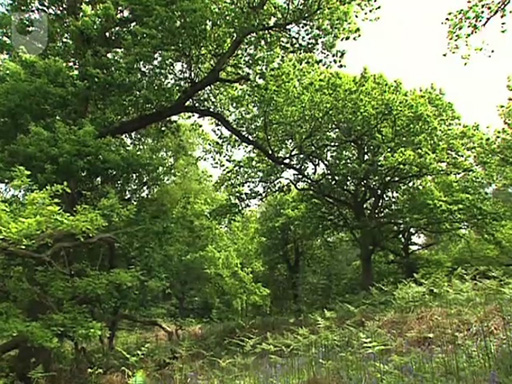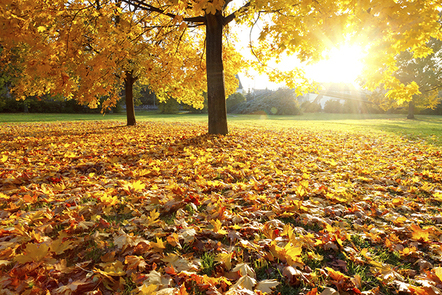2 Exploring oak woodland
Woodlands provide a large variety of habitats, which are occupied by a huge variety of organisms. As an example, consider an oak wood, and the food chains and webs that exist in it.
In ‘Touring an oak woodland’, Professor David Streeter introduces you to a complex ecosystem. As you watch the video, recall the concept of indicator species, which you saw in the first week and consider the following questions.
- Why are the inter-relationships in ecosystems like woodlands so complex?
- What can food chains tell us about the ecosystems that exist in a particular woodland area?
- How have woodlands been managed?
Download this video clip.Video player: eco_1_openlearn_2_4_touring_an_oak_woodland.mp4


Transcript
Touring an oak woodland
PROFESSOR DAVID STREETER
Oak woodland occupies a very special place in British natural history, because many people think that it represents the natural vegetation of much of lowland Britain before man became a significant influence. However, as no examples of that original wildwood survive, nobody really knows what it looked like. In fact, the traditional idea that the whole of lowland Britain was once covered by a continuous sea of oak woodland has now had to be quite seriously revised. Because modern pollen analysis has told us that the original woodland the predominant tree was not actually the oak but was the lime with hazel, and some elm, and of course oak as well. And what has happened is that during pre-history the lime, and to some extent the elm, has all being selectively removed. In Britain we've got two species of oak - the common or pedunculate oak, and the dumast or alternatively named sessile oak. And they have slightly different soil requirements. But in some of the sandy soils of the Weald of Sussex, like here, we have both species growing together. Historically woodlands were managed in one of two traditional ways - either as wood pasture or as coppice. Wood pasture was a method of managing woodland where tall, mature trees were allowed to grow and mixed up with grazing animals between them. Whilst coppice was a method of management whereby the trees were cut to ground level on a regular basis. And the purposes for which oak coppice was used was either for tannin, where the bark was stripped off the young shoots and the tannin was extracted from them, or as charcoal, or perhaps in some parts of the country for pit props. And what we've got here is the rather scrubby re-growth which hasn't been properly managed. On the deeper soils of the valley sides the oaks would have done much better. They would have grown into much finer specimens. So here the trees would have been allowed to mature and they would have been harvested as mature timber. Woodlands are complicated places. They occupy an enormous space from the soil to the top of the tree canopies. And that space is occupied by the trees, and the shrubs, and the herbaceous vegetation. And they generate a huge number of different kinds of habitats. And that, in turn, produces an enormous diversity of woodland organisms. Let's just have a look at some of the common woodland plants that are growing here by the edge of the path. What have we got? Well, obviously first there's bluebell. And with bluebell, what have I got down here? That's honeysuckle, and bramble or blackberry, whichever you like to call it. And bracken - the bracken fern. And if you gave that list of plants to a group of Japanese or Chinese ecologists and you said, where in the world was this list made? If they were any good they would have to say you were somewhere in Western Europe, in a woodland, on well-drained, acid soil. How would they know that? Well, firstly from the bluebell, which is one of the rarest plants in the world, because it's only found in Europe, west of the Black Forest, south of Holland and north of the Pyrenees - nowhere else. And the soil information would have come from the bracken. It only grows on acid soils and where those soils are well-drained. Honeysuckle has got a very similar distribution to the bluebell. And of course is not flowering here where I'm sitting. But behind me, where it's growing over the birches, it'll be in full bloom in a week or two's time. The tree canopies themselves support a much wider diversity of species than any other tree in Western Europe, many of them specific to the oak. And if you add to that the enormous numbers of organisms which are dependent upon dead and decaying wood, then you have the most species-rich habitat in the country.
Interactive feature not available in single page view (see it in standard view).

